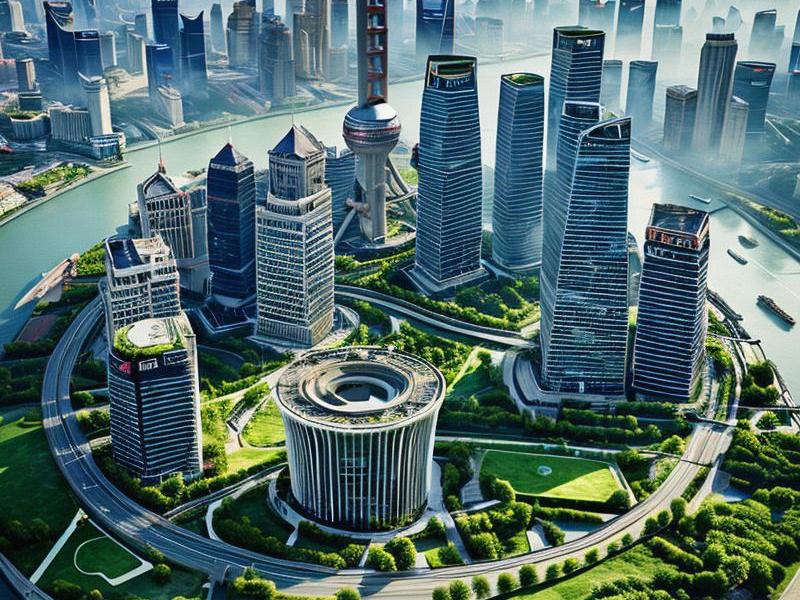This article delves into the ongoing efforts of Shanghai to balance rapid urbanization with environmental sustainability. It explores the city's innovative strategies in urban planning, green technology adoption, and pollution control, highlighting the steps taken to ensure a livable and eco-friendly metropolis.

Shanghai, the bustling metropolis on the banks of the Huangpu River, has long been a symbol of China's economic prowess and urbanization drive. Over the past few decades, the city has witnessed an unprecedented transformation, growing from a relatively small port city into one of the world's largest and most dynamic urban centers. However, this rapid growth has also brought about significant environmental challenges, making the pursuit of sustainable development a top priority for Shanghai.
In recent years, Shanghai has been at the forefront of China's efforts to promote sustainable urban development. The city government has implemented a series of policies and initiatives aimed at reducing pollution, improving energy efficiency, and enhancing the quality of life for its residents. These efforts are part of a broader national strategy to crteea"ecological civilization," which emphasizes the harmonious coexistence between humans and nature.
One of the key aspects of Shanghai's sustainable development strategy is its focus on green urban planning. The city has been actively promoting the concept of "low-carbon cities," which involves reducing greenhouse gas emissions and minimizing the ecological footprint of urban activities. To achieve this, Shanghai has adopted a number of innovative measures, such as:
1. Green Infrastructure: Shanghai has been investing heavily in green infrastructure projects, including parks, green roofs, and vertical gardens. These initiatives not only enhance the aesthetic appeal of the city but also play a crucial role in improving air quality, reducing urban heat island effects, and providing recreational spaces for residents.
2. Public Transportation: The city has been expanding its public transportation network to reduce reliance on private vehicles and lower carbon emissions. Shanghai's metro system, one of the busiest in the world, has been continuously upgraded to accommodate the growing demand. Additionally, the city has been promoting the use of electric buses and bicycles as eco-friendly alternatives to traditional modes of transport.
上海龙凤419官网
3. Energy Efficiency: Shanghai has been taking significant steps to improve energy efficiency in buildings and industries. The city has implemented strict energy-saving standards for new constructions and retrofitted existing buildings with energy-efficient technologies. Furthermore, Shanghai has been encouraging the adoption of renewable energy sources, such as solar and wind power, to reduce its dependence on fossil fuels.
In addition to urban planning, Shanghai has also been making significant strides in environmental protection. The city has been actively addressing issues such as air pollution, water pollution, and waste management, with a particular focus on reducing the discharge of pollutants into the Huangpu River and other water bodies.
1. Air Pollution Control: Air pollution has been a major concern in Shanghai, particularly during the winter months when the city experiences high levels of smog. To combat this issue, the city government has implemented a number of measures, including stricter emission standards for vehicles and industries, the promotion of clean energy, and the use of air purifiers in public spaces. These efforts have led to a gradual improvement in air quality, although challenges remain.
2. Water Pollution Control: The Huangpu River, which flows through the heart of Shanghai, has historically been a major source of water pollution. However, the city government has taken decisive action to address this issue by implementing strict regulations on industrial discharges, improving sewage treatment facilities, and promoting water conservation. As a result, the water quality of the Huangpu River has significantly improved over the years.
上海花千坊龙凤
3. Waste Management: With rapid urbanization, waste management has become a critical issue for Shanghai. The city has been implementing comprehensive waste sorting and recycling programs to reduce the amount of waste sent to landfills. Additionally, Shanghai has been exploring innovative solutions such as waste-to-energy plants to convert garbage into electricity, thereby reducing its environmental impact.
Despite these efforts, Shanghai still faces significant challenges in achieving a fully sustainable future. The city's rapid population growth and continued economic expansion put immense pressure on its resources and infrastructure. Moreover, the ongoing COVID-19 pandemic has highlighted the vulnerabilities of urban systems and the need for resilient urban planning.
To address these challenges, Shanghai must continue to innovate and adapt its strategies for sustainable development. This includes investing in cutting-edge technologies such as artificial intelligence and big data to optimize urban management, promoting circular economy principles to reduce waste and resource consumption, and fostering a culture of environmental awareness among its residents.
Furthermore, Shanghai can learn from the experiences of other global cities that have successfully balanced urbanization with environmental sustainability. For example, Singapore has implemented a comprehensive green plan that includes green buildings, efficient public transportation, and sustainable water management. Similarly, Copenhagen has been a leader in promoting cycling as a primary mode of transport and has set ambitious targets for carbon neutrality.
上海贵族宝贝sh1314
In conclusion, Shanghai's journey towards a sustainable future is a complex and multifaceted process that requires the collective efforts of government, businesses, and citizens. By adopting innovative strategies and learning from the experiences of other cities, Shanghai can overcome its environmental challenges and crteeaa livable, eco-friendly metropolis for generations to come.
The city's commitment to sustainable development is not only essential for the well-being of its residents but also for the global community. As one of the world's largest cities, Shanghai's actions have a significant impact on the environment and can serve as a model for other urban centers around the world.
In the face of mounting environmental challenges, Shanghai's determination to pursue sustainable development is a beacon of hope. By prioritizing green urban planning, environmental protection, and innovative solutions, the city is paving the way for a more sustainable and resilient future. The journey may be challenging, but with continued efforts and collaboration, Shanghai can achieve its vision of a harmonious coexistence between humans and nature.